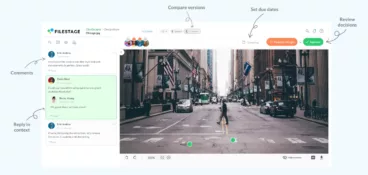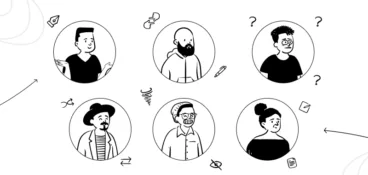The world really is your oyster when it comes to marketing to international audiences. But while modern technology and globalization have made it easier to reach new markets, you must first make sure your marketing messages land correctly with each local audience.
Many global brands have found themselves bearing the brunt of the joke for their translation boo-boos over the years. KFC’s finger-eating flop in China being a prime example. But the consequences of poorly translated marketing content can go from amusing to disastrous in a split second. Which is why it’s super important to double and triple check that your logo, tagline, and marketing campaigns translate as intended into your target language.
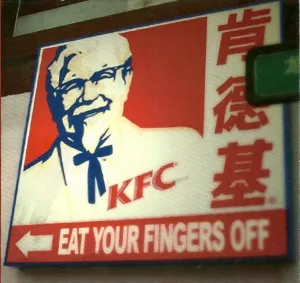
Source: Medium.com
Today, I’m going to help you grow your audience with marketing translations that hit the mark every time.
We’ll look at different areas including:
- Four things to define before translating marketing content
- How to avoid translation fails in your marketing campaigns
- Exploring professional marketing translation services
- Multilingual Search Engine Optimization (SEO)
Let’s dive in!
Four things to define before translating marketing content
Before you rush to translate your marketing content, you need a simple marketing strategy to keep you on track throughout the process. Taking the time to do some research and planning beforehand will save you a lot of troubleshooting in the long run.
Here are four key things you should consider to make sure you don’t confuse, offend, or scare the living daylights out of your international audience with your marketing translation.
1. Target market
First thing’s first. Who are you talking to? What does life look like for them? What drives their buying decisions? The answers to these questions will likely be different for each international market.
Marketing translation isn’t just about speaking your audience’s language. It’s about understanding them on a deeper level. Their culture. Their values. Their sense of humor. Then, and only then, can you start a meaningful conversation and cater to their unique needs.
2. Purpose and goal
After you’ve done some digging into your target market, you’ll want to define exactly what you hope to achieve with your marketing transitions.
Whether your goal is to increase brand awareness, drive sales, or build customer loyalty, having a desired outcome for your marketing content will ensure you don’t lose sight of what you’re trying to say along the way.
3. Process and tools
Of course, you want to mitigate any and all risks when translating your marketing content. But you’ll also likely have timelines to meet. That’s why having a tried and tested translation process is key.
A good place to start is by outlining a step-by-step translation workflow that considers translation, proofreading, and cultural customizations.
If you decide to use collaboration tools or digital translations (more on that in a bit), schedule some time to train your team on how to use them. And if you choose to work with translation professionals or agencies, you might be able to cut costs and speed up your work process by establishing a long-term working relationship.
4. Resources and budget
Acing your marketing translation takes time, and time is money. That’s why you want to allocate resources and budget for each translation project in advance.
Will you use translation tools, professional proofreaders, or outsource the lot? What adaptations need to be made to enhance your content for each market? Asking yourself these questions can help streamline your marketing translation process from the get-go.
How to avoid translation fails in your marketing campaigns
Imagine going through all the planning, ideation, and rounds of design feedback only to realize you’ve messed up the translation once your marketing campaign is out in the world. Spine-chilling stuff, eh? But the good news is that this is entirely avoidable if you take the proper approach.
Here are four things you can do to steer clear of bad translations in your international marketing campaigns:
- Research research research
- Be mindful of cultural sensitivity
- Work with native speakers
- Set up a reliable review process
Let’s take a closer look at each step.
1. Research research research
If KFC’s tagline blunder has taught us anything, it’s that a copy and paste marketing translation just isn’t going to cut it. It takes more work to launch marketing campaigns that hit the mark with every audience.
First, you’ll want to understand your target audience and make sure you’re talking to the right people. You can do this with the help of local focus groups, surveys, and/or social media.
Then, take a look at current market trends for that demographic. Check out your key competitors too to make sure you’re sending out the right message that sets you apart in the best ways.
And for the love of Fridays, please research any terms and phrases ahead of time to make sure they’re culturally appropriate.
2. Be mindful of cultural sensitivity
If you really want to grow your business’ global audience, it’s important to understand that what works in one culture could potentially be a big no-no for another.
Localization is about tweaking your marketing content not only linguistically but also culturally. This can involve modifying everything from product names and slogans to entire marketing strategies. It might sound like an extra step, but it’s essential. Because culturally clued-in marketing translation will keep your message clear and accurate, while also making sure the tone and intent fits with your target audience’s norms and expectations.
3. Work with native speakers
The best way to guarantee culturally and linguistically savvy marketing translations is by working with native speaking marketing translators.
Native speakers bring a bunch of invaluable knowledge on the local lingo, expressions, and cultural nuances. If you want your message to feel authentic and personalized to your target audience, this is the way to go.
Ideally, you’ll want to work collaboratively with native translators from the start of your translation project as this gives them the opportunity to share their insights and ideas. But if this isn’t feasible, hiring a native speaker to review your translated content for any mishaps or unintended meanings will be the next best thing.
4. Set up a reliable review process
There’s no denying that marketing translation has the potential to be a messy process if not managed properly. But you’ll be pleased to hear that review and approval software can really help you streamline your marketing translations and enhance efficiency for better, faster results – without all the chaos.
Filestage is a review and approval software that helps you share, discuss, and approve your files in one place. It allows you to review a range of marketing materials like documents, designs, videos, wireframes, audio, and more. This makes Filestage the perfect tool to help you manage translations for your marketing campaigns.
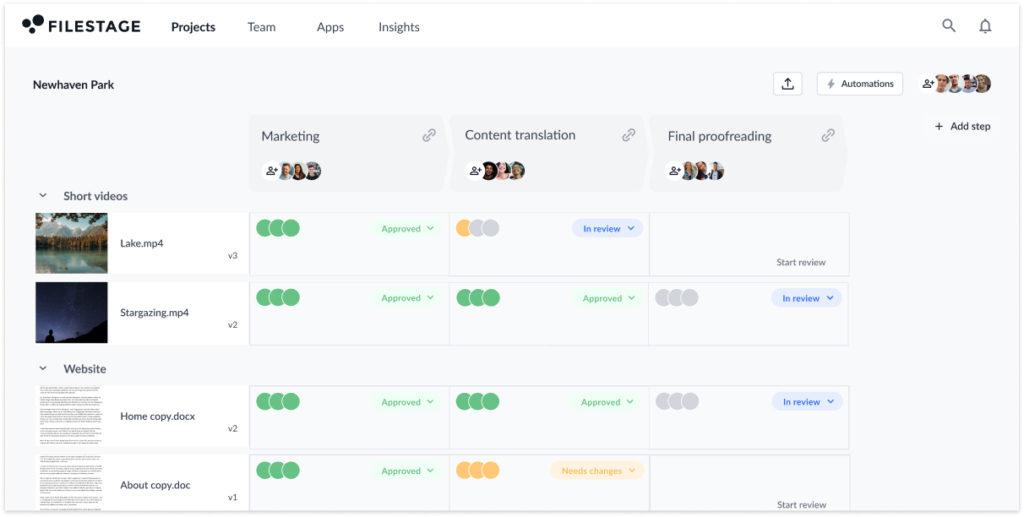
Let’s look at how this could work when translating English marketing content to German:
- Auto-translate your content to German using a tool like DeepL
- Create a dedicated reviewer group in your approval process for German versions of your content
- Invite a native German translator, plus any creatives who need to check the content’s layout (German copy is always longer than the English version, which could break parts of your design)
- Action everyone’s feedback, share a new version, and iterate until everyone’s happy
And here’s the best bit – you can invite an unlimited number of reviewers to each project without them needing to make an account. So your internal teams, professional translators, and external stakeholders can get stuck in with just a few quick clicks!
Supercharge your marketing reviews
Share, review, and approve all your content in one place with Filestage.
Multilingual Search Engine Optimization (SEO): How to reach new audiences with your web content
If you want to get your blog or website seen by more people across the world, you’ll need to nail your multilingual SEO. This is the process of converting your web content into different languages, with a focus on helping users find your website in their organic search results.
Let’s look at the steps you can take to make the most of your multilingual SEO.
Keyword research
Keywords are everything when it comes to achieving SEO success. For this step, you might want to work with a native speaker to put together an initial set of localized keywords for the article/page you’d like to translate. This list can then be expanded with the help of some keyword research tools.
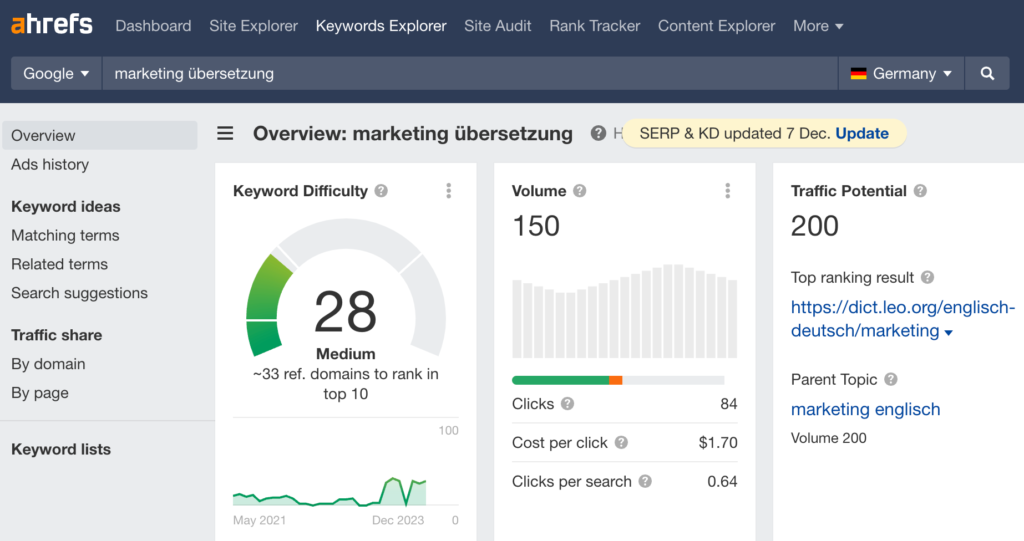
Note: SEO tools will often make it look like your multilingual keywords have little to no searches compared to English articles. So it’s a good idea to check how much traffic the highly-ranked articles actually get.
Webpage translation
Now it’s time to translate your web marketing content into your chosen language. You can speed up this process with tools like DeepL to auto-translate the content before giving it to a native editor for localization.
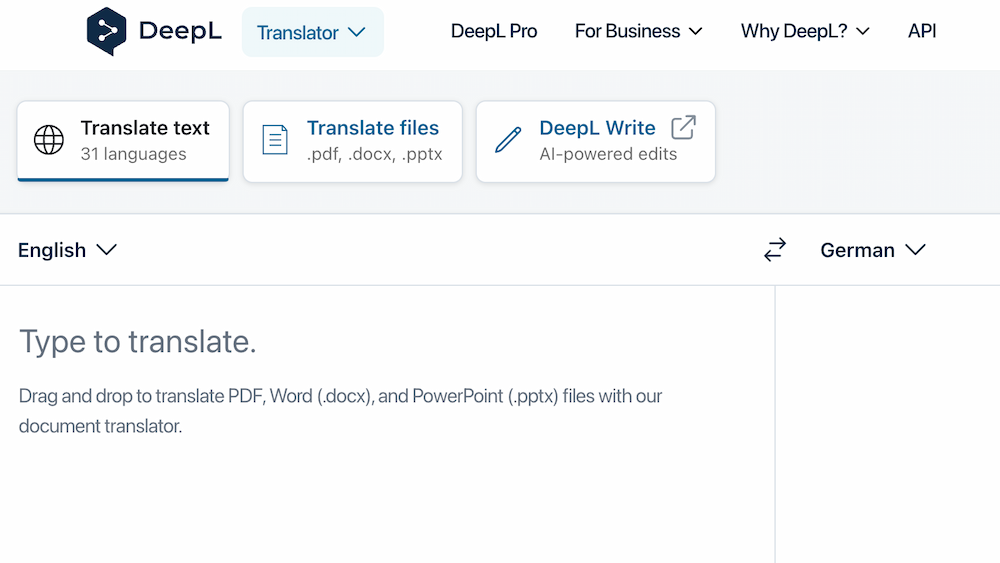
Note: While it might be tempting to cut corners and rely solely on automated translation tools, this will rarely give you a good result.
SEO check
After translating your marketing content for SEO, it’s a good idea to use a tool like SurferSEO to make sure you’ve included all the relevant keywords. Don’t forget to check that your meta titles meta and descriptions are in line with local search patterns too.
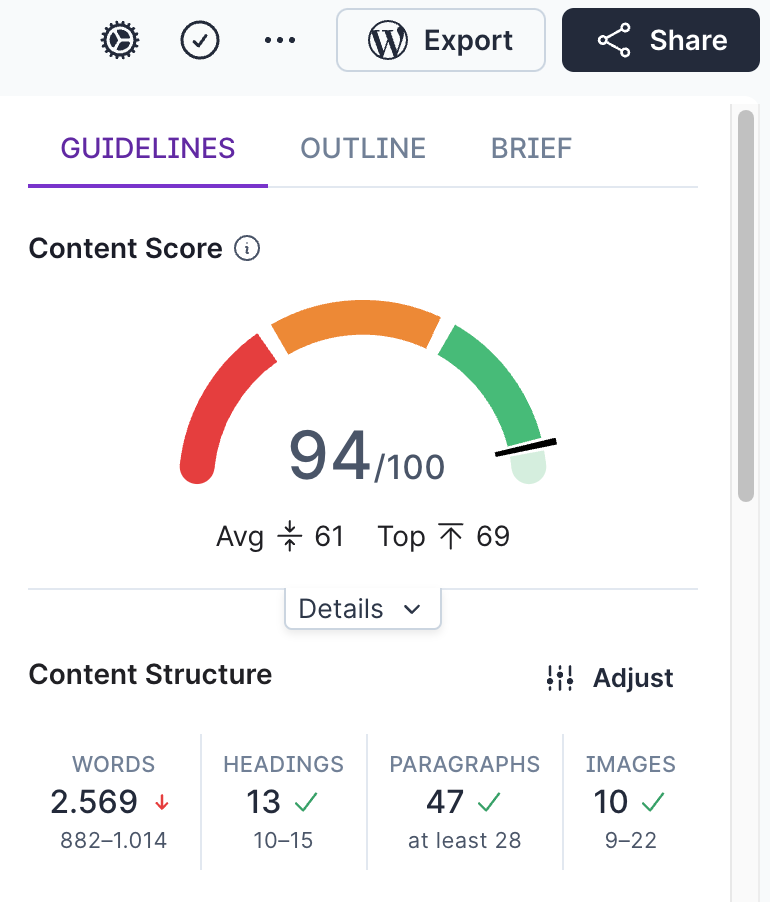
The details
While visibility is of course a priority here, user experience is equally as important.
Take the time to swap out images and check that your links lead to pages in the same language. And last but not least, take a look at all your other settings like URL, excerpt, and CTA to guarantee consistency.
Exploring professional marketing translation services
There are lots of tools and resources out there to help you translate your marketing content.
Here’s a quick overview of the use cases, pros, and cons of each marketing translation service so you can choose the right ones for your project.
Digital translation tools
Automated tools like DeepL, WPML, and Google Translate are a quick and simple way to translate large volumes of text from one language to another.
Pros
- Speed – When time if of the essence, these tools can help you translate lots of marketing content fast
- Cost effective – Translation tools are usually either free or very low cost compared to manual marketing translation services
Cons
- Inaccuracy – Technical translation can often lack the precision of human translation
- Poor cultural awareness – These tools can struggle with things like context, expressions, and cultural norms
- Limited creativity – These tools tend to produce cookie cutter translations that lack imagination
Agencies
Translation agencies specialize in professional, high-quality language translation for individuals, businesses, and organizations.
Pros
- Quality – Translation agencies deliver top-notch content that’s been edited and proofed by experts
- Customization – Agencies can tailor their services to meet your needs for different projects
Cons
- Cost – Professional translation agencies can be pretty pricey, especially for large projects
- Longer turnaround times – The time needed for translation projects can vary, and urgent requests may come at a higher cost
All-in-one solutions
Platforms like Weglot, Phrase, and Contentoo are able to automatically detect, scan, and translate your content. A human can then review and make edits right there on the platform.
Pros
- Efficiency – These tools integrate with other content management systems and streamline the process from start to finish
- Consistency – Using one tool can help you produce coherent marketing translations, with platforms taking stock of your manual edits for the next part of the project
Cons
- Potential complexity – For smaller projects, some features might feel overly complicated or unnecessary
- Flexibility constraints – Many platforms have fixed settings that may not work for the unique needs of every project
Final thoughts
Marketing translation can feel overwhelming at first. But by understanding your target market, setting goals, and using a strong process with the right tools, you’ll be able to create great content that grows your global audience. And if you’d like to see how Filestage can streamline your global marketing efforts, start a free trial here →


